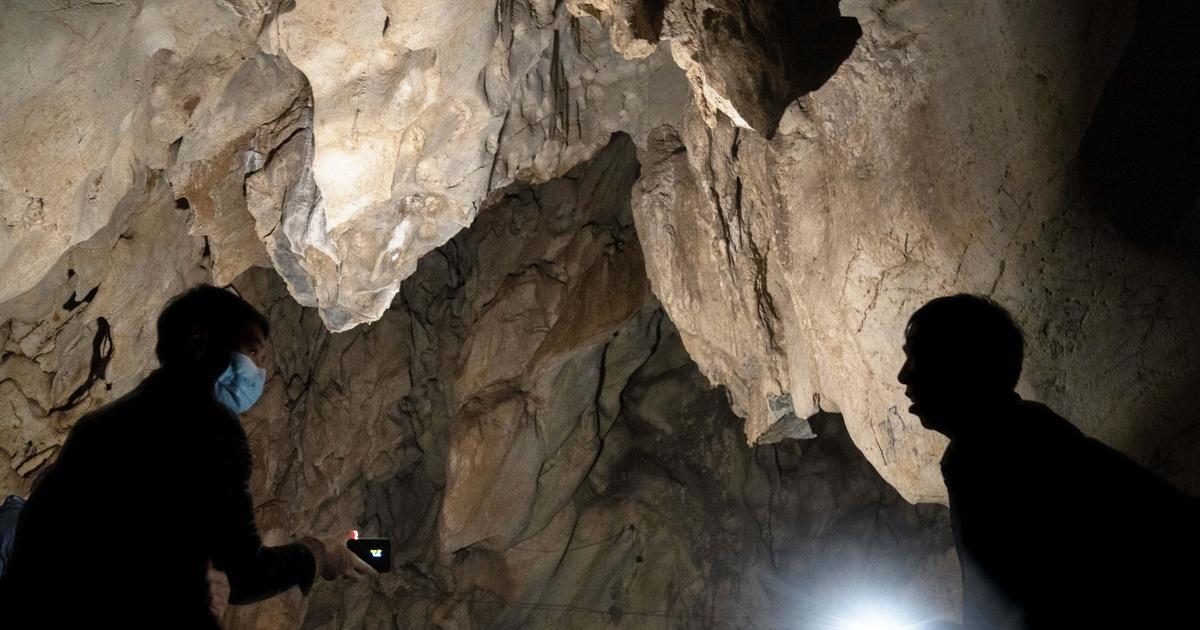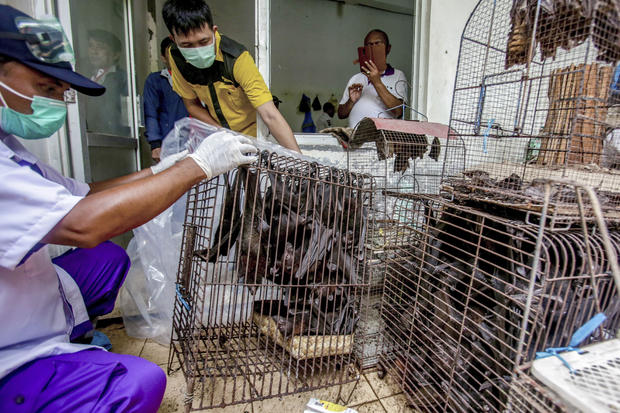
Man-made climate change “could have played a key role” in the coronavirus pandemic. This is the conclusion of a new study that examined how climate change has transformed the forests of Southeast Asia, leading to an explosion of bat species in the region.
The researchers found that due to changes in vegetation over the past 100 years, another 40 species of bats have moved to the region, carrying with them another 100 types of coronaviruses carried by bats. Bats are known carriers of coronaviruses, with different species carrying thousands of different types. Many scientists believe that the virus that triggered the global COVID-19 pandemic originating from bats in southern China’s Yunnan Province or neighboring areas before it crosses paths with humans.
These findings make scientists concerned about the likelihood that climate change will make pandemics worse.
“If bats carrying around 100 coronaviruses have spread to a new area due to climate change, then it would probably seem that this increases, rather than decreases, the chance of a coronavirus harmful to humans being present. , transmitted or evolve in this area ”. explains Dr. Robert Beyer, lead author of the study and a researcher at Cambridge University.
De Han Guan / AP
Researchers have used climate records to create a map of the world’s vegetation as it was a century ago. Using knowledge of the type of vegetation required by different species of bats, they determined the global distribution of each species in the early 1900s.
They then compared this to the current bat populations. Their results show that the richness of bat species – the number of different species of bats found in a given area – has flourished in this pocket of Southeast Asia more than anywhere else on Earth.
The image below from the study shows how the forests of southern China, Myanmar and Laos have changed in the last century, improving bat-favored habitat and allowing more species to proliferate. This distinct bullseye from the region shows an increase in the richness of bat species. (The study does not take into account the general size of the population, but only the diversity of bat species in the area.)
Dr. Robert Beyer
According to the authors, climate change, such as rising temperatures, sun and carbon dioxide, which affect the growth of plants and trees, has changed the structure of vegetation in southern China, turning tropical shrubs into tropical savannas and deciduous forests. This type of forest, the authors claim, is more suitable for bat species.
The study calls this area of Southeast Asia “a global hotspot” for bat species and indicates genetic data suggesting that SARS-CoV-2, the virus that causes COVID-19, originates in this region.
This, the authors say, provides the first evidence of how climate change could have played a direct role in the virus.
“We estimate that over the past century, climate change has led to a significant increase in the number of bat species at the site of SARS-CoV-2,” Beyer said. This increase suggests a possible mechanism for how climate change may have played a role in the pandemic.
A team of researchers from the World Health Organization was finally allowed in Wuhan, China, in January to investigate the source of the outbreak, which was first reported in that city a little over a year ago. A top theory among scientists is that the virus appeared in bats before making the leap to humans, possibly through an animal-type host. pangolini. Some of the first cases were related to a wildlife market in Wuhan. But from now on, this is just a theory, and researchers are just beginning to formally investigate the origins of the pandemic.
Dr. Rick Ostfeld, an expert in disease ecology at the Cary Institute for Ecosystem Studies in Millbrook, New York, believes the research is compelling, even if he disagrees with all its findings. He says it is not surprising that climate change has been found to transform bat forests and communities. He also agrees with the study’s authors that the movement of animals can help spread viruses.
“The movement of animal communities around a region can have a strong impact on disease transmission by exposing animal hosts to new pathogens,” he said.
But he is cautious about drawing conclusions beyond that.
“The link to the appearance of coronaviruses is highly speculative and seems unlikely,” Ostfeld said.
“What seems to be wrong with the study is the assumption that the increased diversity of bats (which they postulate) leads to an increased risk of a virus transmitted by bats jumping to humans. It is simply not the case,” he said. The vast majority of bats are harmless to humans – they do not harbor viruses that can make us sick. So adding more species does not increase the risk.
Kate Jones, a professor of ecology and biodiversity at University College London, is also somewhat cautious. She said, “Climate change certainly has a role to play in changing the distribution of species to increase ecological risk. However, spillover risk is a complex interaction not only of ecological risk but also of human exposure and vulnerability.”
Beyer agrees that “caution is well warranted” when it comes to connecting climate change directly to the pandemic because, as he explains, assessing the degree to which climate change has contributed to any stage between a virus-carrying bat and a human getting infected will take a lot more work. In particular, he says, it involves the use of epidemiological models that analyze the interactions of different species and viruses in space and time.
Although it is widely understood that the exponential growth of the human population and our rampant exploitation of the natural world, such as destroying forests and expansion trade in animals, It is increasing the risk as contagious pathogens can make it easier to jump from animals to humans, it was less clear to what extent factors of climate change in.
AP
However, in the last century, due to man-made climate change, many ecosystems have warmed – sometimes by a few degrees – and rainfall patterns have changed, with some areas becoming smaller and others growing. These changes in the ecosystem change the habitat of many species, bringing more species into contact, allowing potential viruses to spread more easily.
When asked about the links between climate and the spread of disease, most experts agree that there is an impact, but some say that direct human actions such as deforestation, development or industrial-scale animal farming are a greater concern.
“It can be shown that human population growth, human movement and degrading natural environments through agricultural expansion have a more important role to play in understanding the spread of SARS-CoV-2,” Jones said.
Ostfeld noted: “We can predict which species of wildlife are most likely to carry pathogens that can make people sick. These are generally the ones that thrive when we replace natural habitat (such as forests and savannas) with agriculture, residential development and malls. “
Beyer does not dispute those assessments. “We absolutely agree that the expansion of urban areas, agricultural land and hunting grounds into natural habitats is a key factor in the transmission of zoonotic diseases – these are the ones that bring many animals carrying pathogens and humans into contact, in the first place.” , he said.
But given the findings of his research on how the climate has reshaped the region, Beyer believes climate change can be a significant factor.
“Climate change can lead to where these animals appear; in other words, climate change can bring pathogens closer to humans. It can also move a species carrying a virus into the habitat of another species to which the virus can then jump – a step that may not have taken place without climate change and this could have major long-term consequences on where the virus can pass “.
Beyer also sees climatic connections beyond just the growth of bat species. “In some cases, higher temperatures can increase the viral load on the species, which can make the virus more likely to be transmitted,” he said. “And: rising temperatures can increase viruses’ tolerance to heat, which in turn can increase infection rates, because one of our main systems of defense against infectious diseases is raising body temperature (fever).”
Although there is some caution in the scientific community about the specific impact of climate change on the current coronavirus pandemic, there is broad agreement that in the future, climate change will be a growing factor in emerging infectious diseases and pandemics.
“Climate change will change the geographic distribution of pathogen-bearing species to overlap with previously non-overlapping species,” Beyer said. “These new interactions will provide dangerous opportunities for viruses to spread and evolve.”
“Climate change is certainly an important factor in the onset and spread of disease. It can increase transmission in many ways,” Ostfeld said. “So, yes, climate change is certainly a factor in stimulating future pandemics.”


